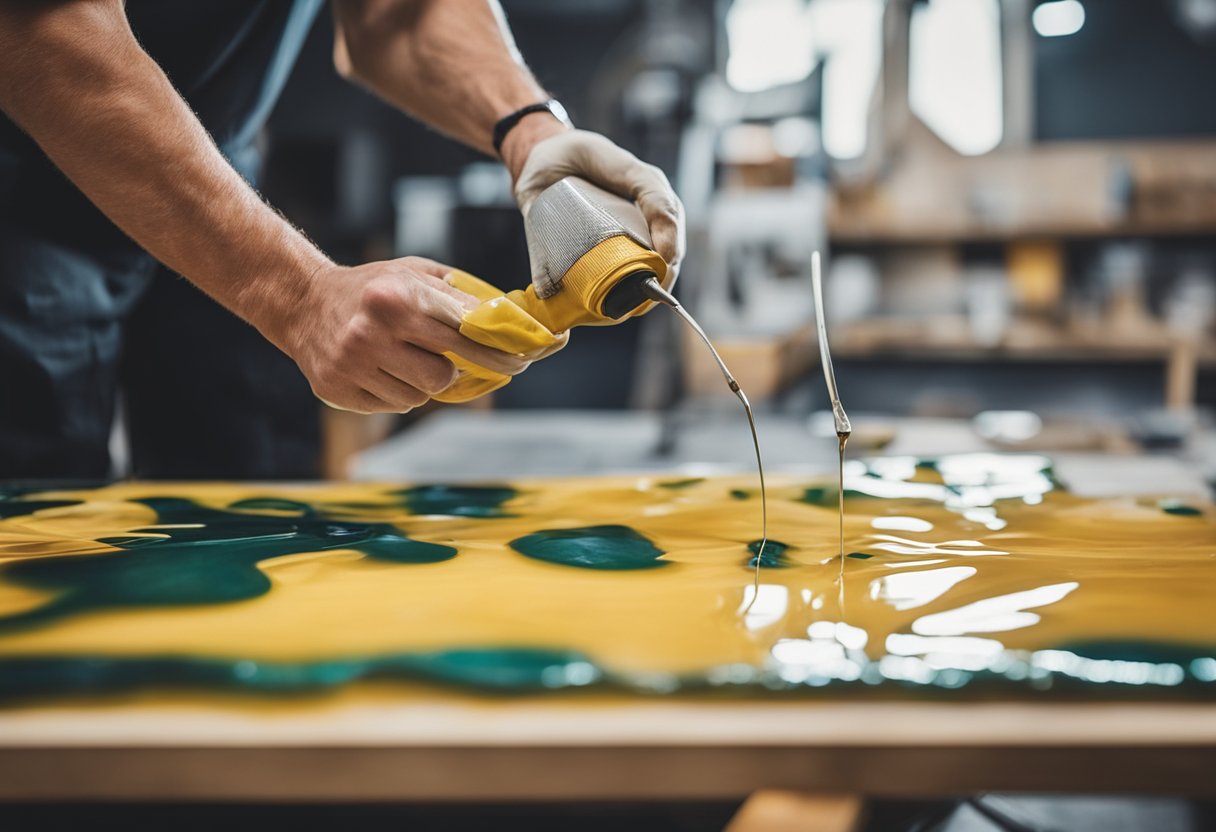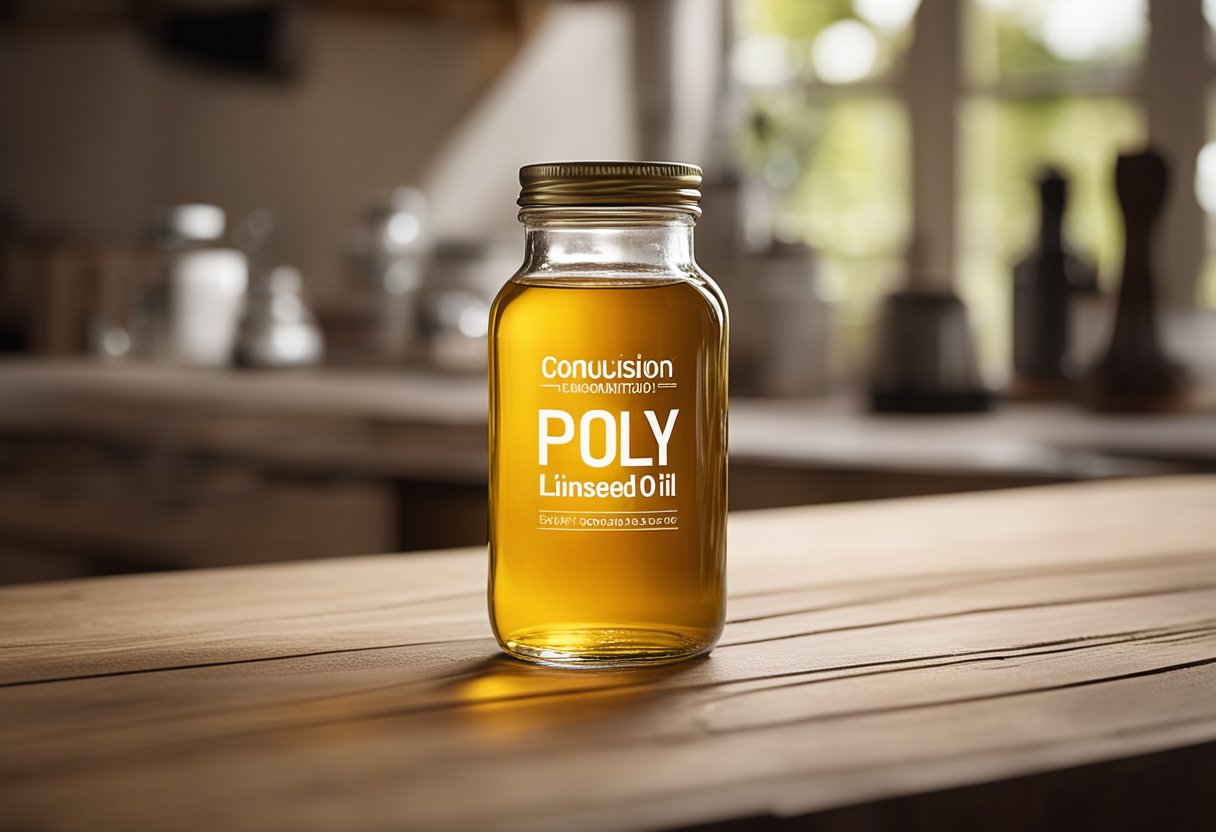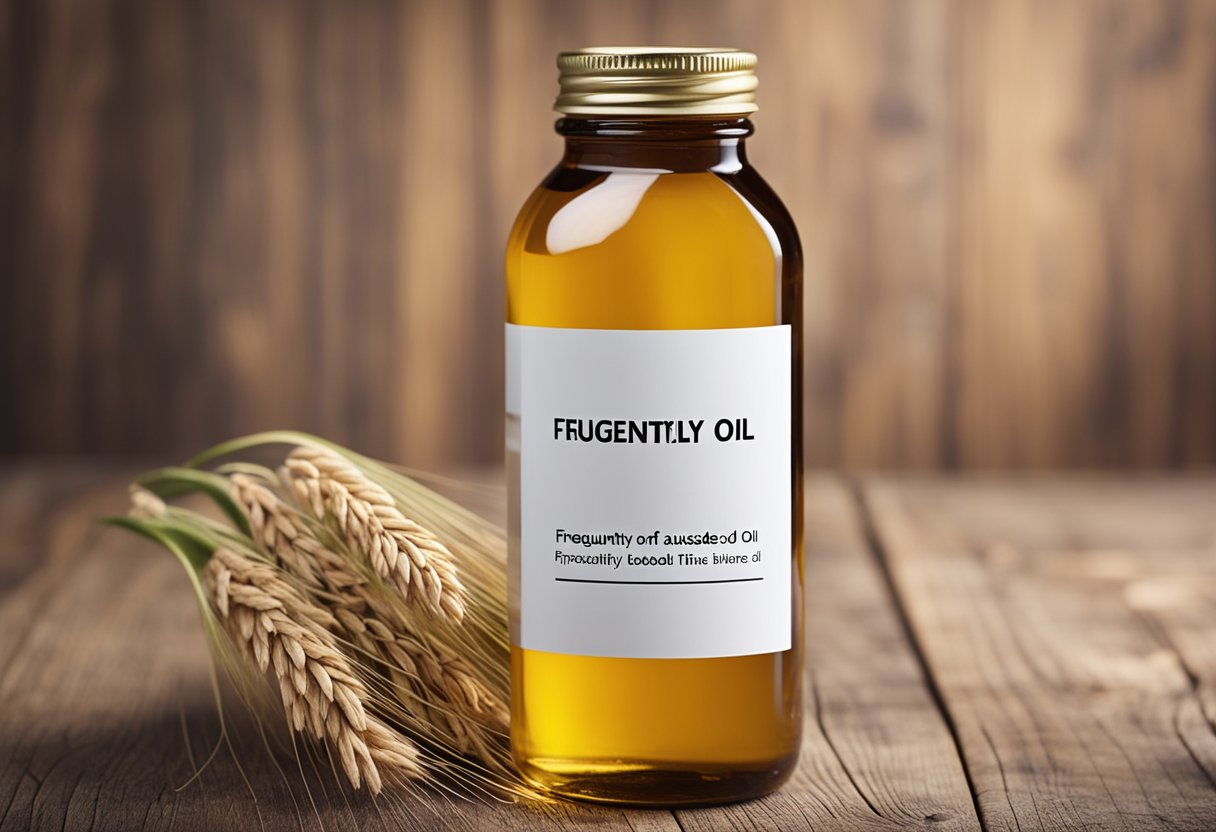Polyurethane and linseed oil are two common finishes for woodwork, but can they be used together? The short answer is yes, but there are some important things to keep in mind when applying poly over linseed oil. In this article, I will provide a comprehensive guide to help you understand the process of applying polyurethane over linseed oil, including preparation, application, curing, and maintenance.
Understanding Poly and Linseed Oil: Before we dive into the process of applying polyurethane over linseed oil, it’s important to understand the properties of each finish. Polyurethane is a synthetic finish that creates a hard, durable surface on wood. Linseed oil, on the other hand, is a natural finish that penetrates the wood to protect and enhance its natural beauty. While both finishes are great on their own, combining them can create a unique look and provide added protection to the wood.
Preparation and Application: The key to successfully applying polyurethane over linseed oil is preparation. The wood must be clean, dry, and free of any dust or debris. Sanding the surface lightly with fine-grit sandpaper can help the polyurethane adhere to the surface. When applying the polyurethane, it’s important to use a compatible product that will adhere to the linseed oil. Applying thin coats of polyurethane with a brush or sprayer can help prevent drips and ensure an even finish.
Key Takeaways
- Polyurethane and linseed oil can be used together to create a unique finish on wood.
- Preparation is key when applying polyurethane over linseed oil.
- Choosing the right materials and maintaining the finish can help ensure its durability over time.
Understanding Poly and Linseed Oil
https://www.youtube.com/watch?v=qUgZefTPESQ&embed=true
The Basics of Polyurethane
Polyurethane is a synthetic polymer that is used as a protective coating for wood. It comes in two forms: oil-based polyurethane and water-based polyurethane. Oil-based polyurethane is more durable and offers better protection, but it takes longer to dry and has a strong odor. Water-based polyurethane is less durable but dries faster and has a lower odor.
Polyurethane provides a clear, hard, and durable finish that protects the wood from scratches, stains, and water damage. It also enhances the natural beauty of the wood by giving it a glossy or satin finish.
The Essentials of Linseed Oil
Linseed oil is a natural oil that is extracted from flax seeds. It is a popular wood finish that enhances the natural beauty of the wood and provides some level of protection. There are two types of linseed oil: raw linseed oil and boiled linseed oil. Raw linseed oil takes a long time to dry and may not provide adequate protection. Boiled linseed oil, on the other hand, is treated with chemicals that make it dry faster and provide better protection.
Linseed oil penetrates the wood and provides a deep, natural-looking finish. It also helps to protect the wood from water damage and other types of wear and tear.
Using Polyurethane Over Linseed Oil
It is possible to use polyurethane over linseed oil. However, it is important to note that polyurethane will not adhere well to linseed oil that has not fully dried. Therefore, it is recommended to wait at least a week before applying polyurethane over linseed oil.
When using oil-based polyurethane over linseed oil, it is important to note that the polyurethane may yellow over time. This is especially true if the wood is exposed to sunlight. Water-based polyurethane, on the other hand, does not yellow as much and is a good option if you want to maintain the natural color of the wood.
In conclusion, polyurethane and linseed oil are both popular wood finishes that provide protection and enhance the natural beauty of the wood. It is possible to use polyurethane over linseed oil, but it is important to follow the proper steps and wait for the linseed oil to fully dry.
Preparation and Application
https://www.youtube.com/watch?v=WealcWDpCfk&embed=true
Surface Preparation
Before applying polyurethane over linseed oil, it is crucial to properly prepare the surface to ensure a smooth and even finish. The first step is to clean the wooden surface thoroughly, removing any dirt, debris, or old finishes. A vacuum cleaner or a tack cloth can be used to clean the surface.
Once the surface is clean, sand it with a fine-grit sandpaper to create a smooth surface for the linseed oil and polyurethane to adhere to. Be sure to wear gloves and a dust mask while sanding to protect yourself from the dust. After sanding, use a tack cloth to remove any remaining dust.
Applying Boiled Linseed Oil
Before applying polyurethane, it is important to apply boiled linseed oil to the wooden surface. Boiled linseed oil helps to bring out the natural beauty of the wood and provides a protective layer. Apply the linseed oil with a brush, following the grain of the wood. Allow the linseed oil to dry completely before applying polyurethane.
Applying Poly Over Linseed Oil
When applying polyurethane over linseed oil, it is important to use a compatible polyurethane depending on the type of linseed oil used. Water-based polyurethane is compatible with raw linseed oil, while oil-based polyurethane is compatible with boiled linseed oil.
Apply the polyurethane with a brush, following the grain of the wood. Apply thin and even coats, allowing each coat to dry completely before applying the next one. Sand lightly between coats with a fine-grit sandpaper to create a smooth surface.
In conclusion, proper surface preparation is crucial when applying polyurethane over linseed oil. Sanding the surface, applying boiled linseed oil, and using a compatible polyurethane are important steps to achieving a lasting, lustrous finish.
Choosing the Right Materials
https://www.youtube.com/watch?v=cFN7H6vPDCE&embed=true
When it comes to applying polyurethane over linseed oil, choosing the right materials is crucial to achieving a smooth and durable finish. In this section, I will discuss the tools and materials needed for the job, as well as how to choose the right type of polyurethane.
Tools for the Job
Before you start applying polyurethane over linseed oil, you will need to make sure you have the right tools for the job. Here are some of the tools you will need:
- Brush or roller: You can use either a brush or a roller to apply polyurethane over linseed oil. A brush is ideal for small areas or intricate details, while a roller is better for larger surfaces.
- Sandpaper: You will need sandpaper to sand the surface of the linseed oil before applying the polyurethane. Make sure to use a fine-grit sandpaper to avoid scratching the surface.
- Vacuum cleaner: You will need a vacuum cleaner to remove any dust or debris from the surface before applying the polyurethane.
- Mineral spirits: You may need mineral spirits to clean your tools after applying the polyurethane.
Choosing the Right Poly
Choosing the right type of polyurethane is also important when applying it over linseed oil. There are two main types of polyurethane: oil-based and water-based.
Oil-based polyurethane is typically preferred for its compatibility with linseed oil. However, it can take longer to dry and has a stronger odor than water-based polyurethane. If you choose to use oil-based polyurethane, make sure to use a compatible brush or roller.
Water-based polyurethane is a good choice if you want a faster drying time and a lower odor. However, it may not be as compatible with linseed oil as oil-based polyurethane. If you choose to use water-based polyurethane, make sure to use a compatible brush or roller.
When choosing the right polyurethane, make sure to consider the type of linseed oil you are using and the type of finish you want to achieve. It’s also important to read the manufacturer’s instructions carefully and follow them closely to ensure a successful application.
Curing and Finishing
https://www.youtube.com/watch?v=GhGM93BtCKU&embed=true
After applying linseed oil to your wooden surface, you will need to allow it to dry and cure completely before adding a topcoat of polyurethane. I recommend waiting at least 24 hours before applying the first coat of polyurethane.
Drying and Curing Process
During the drying process, linseed oil will penetrate into the wood and cure from the inside out. This process can take up to a week. However, it is important to note that the curing process can take even longer depending on the humidity and temperature of the environment.
Sanding Between Coats
Once the first coat of polyurethane has been applied, it is important to sand the surface lightly before applying the second coat. Sanding between coats will help to ensure that the surface is smooth and free of any bumps or imperfections.
Final Top Coat
After sanding, apply a second coat of polyurethane. I recommend waiting at least 24 hours before applying the final coat. Once the final coat has been applied, allow the surface to dry and cure completely.
It is important to note that the curing process for polyurethane can take up to a week. During this time, it is best to avoid touching or using the surface. Once the curing process is complete, your wooden surface will be protected and have a beautiful finish that will last for years to come.
Maintenance and Durability
https://www.youtube.com/watch?v=y41tYxTepiE&embed=true
When it comes to woodworking projects, one of the most important factors to consider is the durability of the finish. A high-quality finish not only protects the wood from wear and tear, but also enhances its natural beauty. As someone who has worked with linseed oil and polyurethane finishes for many years, I can confidently say that combining the two can provide excellent protection and durability for your project.
Linseed oil is an oil-based finish that is known for its ability to penetrate deep into the wood, providing protection from the inside out. However, it can take a long time to dry and may not be as durable as other finishes. Polyurethane, on the other hand, is a synthetic polymer that forms a hard, protective layer on top of the wood. It is known for its durability and resistance to wear and tear.
By applying polyurethane over linseed oil, you can get the best of both worlds. The linseed oil will penetrate deep into the wood, providing protection from within, while the polyurethane will form a hard, protective layer on top of the wood, providing additional protection from wear and tear.
It is important to note that the durability of the finish will depend on the quality of the materials used and the application process. Make sure to follow the manufacturer’s instructions carefully and use high-quality materials to ensure the best results.
In conclusion, combining linseed oil and polyurethane can provide excellent protection and durability for your woodworking project. By using a high-quality finish and following the proper application process, you can ensure that your project will look beautiful and last for years to come.
Common Challenges and Solutions
Dealing with Sticky Surfaces
One common challenge when applying polyurethane over linseed oil is dealing with sticky surfaces. This can happen if the polyurethane is applied too thickly or if the linseed oil has not fully dried before application. It can also happen if the humidity is high or if the temperature is too low.
To solve this problem, I recommend lightly sanding the sticky surface with fine-grit sandpaper. This will remove any rough spots and help the polyurethane adhere better. You can also try wiping the surface with a clean, dry cloth to remove any excess polyurethane.
Adhesion Issues
Another challenge that can arise when applying polyurethane over linseed oil is adhesion issues. This can happen if the linseed oil has not fully cured, or if the surface was not properly cleaned before application.
To ensure good adhesion between the linseed oil and the polyurethane, I recommend removing any dust or debris and cleaning the wood thoroughly. You can use a damp cloth or a tack cloth to remove any dust or debris, and then wipe the surface with a clean, dry cloth to remove any remaining residue.
You can also try using a rubber glove when applying the polyurethane. This will help prevent skin oils from contaminating the surface and interfering with adhesion.
By following these simple tips, you can avoid common challenges when applying polyurethane over linseed oil and achieve a beautiful, durable finish.
Conclusion
In conclusion, applying polyurethane over linseed oil can be a great way to enhance the natural beauty of your woodworking projects, including wood floors. While it may take a few months for the linseed oil to dry completely, the end result is worth the wait.
When it comes to shine, applying polyurethane over linseed oil can give a high-gloss finish, but it is important to note that this may not be desirable for all projects. For those looking for a more natural look, applying a thin layer of polyurethane can still provide protection without compromising the natural beauty of the wood.
Overall, it is important to follow the proper steps when applying polyurethane over linseed oil. This includes ensuring the linseed oil is completely dry and sanded before applying the polyurethane. It is also recommended to apply a second coat of polyurethane after the linseed oil has dried to ensure a durable finish.
In summary, applying polyurethane over linseed oil can be a great way to protect and enhance the natural beauty of your woodworking projects. By following the proper steps and taking the time to allow the linseed oil to dry completely, you can achieve a durable and beautiful finish that will last for years to come.
Frequently Asked Questions
Can you seal over linseed oil?
Yes, you can seal over linseed oil. However, it is important to wait until the linseed oil has fully cured before applying any sealant. This can take anywhere from a few days to several weeks depending on the temperature and humidity in the environment. Once the linseed oil has cured, you can apply a sealant such as polyurethane to protect the wood and give it a glossy finish.
Oil-based poly over BLO
Oil-based polyurethane can be applied over boiled linseed oil (BLO) once the BLO has fully cured. It is important to wait until the BLO has cured as applying the polyurethane too soon can cause it to become tacky and not adhere properly. Once the BLO has cured, lightly sand the surface and then apply the polyurethane with a brush or spray bottle.
Linseed oil clear coat
Linseed oil can be used as a clear coat to protect and enhance the natural beauty of wood. However, linseed oil takes a long time to dry and can be prone to yellowing over time. It is also not as durable as other clear coat options such as polyurethane. If you choose to use linseed oil as a clear coat, be prepared to reapply it regularly to maintain its protective properties.
Mixing linseed oil and polyurethane
It is not recommended to mix linseed oil and polyurethane together. While it is possible to mix the two, it can result in an inconsistent finish and may not adhere properly to the wood. It is best to apply linseed oil and polyurethane separately, waiting for each to fully cure before applying the next layer.
Linseed oil vs polyurethane
Linseed oil and polyurethane are both used to protect and enhance the natural beauty of wood. However, there are some key differences between the two. Linseed oil is a natural product that penetrates the wood to protect it from the inside out. It also enhances the natural grain and color of the wood. Polyurethane, on the other hand, is a synthetic product that forms a protective layer on top of the wood. It is more durable than linseed oil and provides a glossy finish.
Can you use water based paint over linseed oil?
It is generally not recommended to use water-based paint over linseed oil. Linseed oil takes a long time to dry and can be prone to yellowing over time. Water-based paint can also be prone to cracking and peeling when applied over an oil-based product. If you need to paint over linseed oil, it is best to use an oil-based paint for the best results.

Hi, I’m Sal Muller of Tooltrip.com. My DIY experience led me to understand essential power tools for home projects. Tooltrip.com guides enthusiasts and professionals in choosing right tools for any job. I provide concise top tool reviews for easier, efficient DIY.





